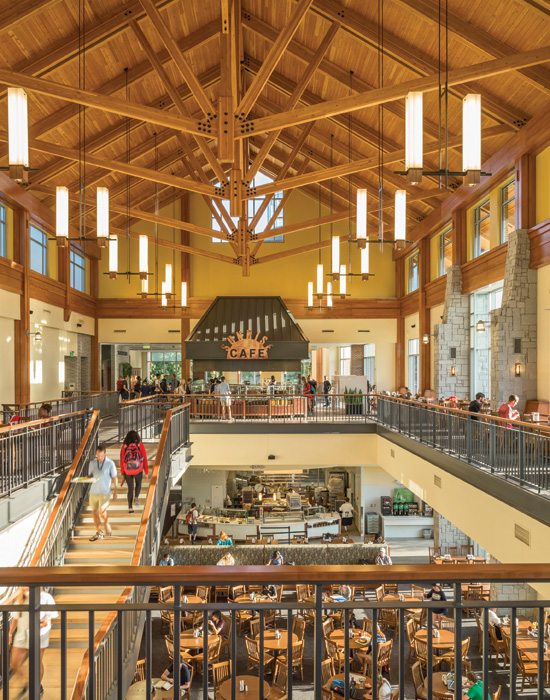Wood and Indoor Environment
Learning Objectives:
- Define the relationship between a building’s sustainability and the health and performance of the building’s occupants.
- Explore how wood was used to enhance the experience of building occupants in projects from around the country.
- Recognize how wood used as a structural and finish material contributes to key elements of occupant environment including indoor air quality, acoustic performance, and physical health.
- Examine evidence confirming the positive human response to wood for its aesthetic qualities and connection to nature.
Credits:
This course is approved as a Structured Course
This course can be self-reported to the AANB, as per their CE Guidelines
Approved for structured learning
Approved for Core Learning
This course can be self-reported to the NLAA
Course may qualify for Learning Hours with NWTAA
Course eligible for OAA Learning Hours
This course is approved as a core course
This course can be self-reported for Learning Units to the Architectural Institute of British Columbia
The objectives of sustainable design are broader than just environmental effects, having come to embrace issues of human health and performance. As sedentary and service-related work becomes more prevalent in our society, the amount of time people spend inside buildings increases—the average North American spends 90 percent of his or her time indoors, another 5 percent in cars and only 5 percent outside. This not only makes the design of building interiors ever more important, but calls for the buildings themselves to provide a connection to nature that will only get harder to come by.
Many factors influence whether a building has a positive or negative impact on its occupants. This course highlights remarkable buildings where the use of wood as a structural or finish material has made a unique contribution, with a focus on indoor air quality, acoustics, physical health, and a natural, positive human response to wood that has always been intuitive, but is increasingly being proven by research and experience.
“This is one of the most overlooked aspects of sustainability. It's not about the points. It's about designing places where people want to be,” says Marc L'Italien of EHDD, discussing the LEED Platinum-certified David and Lucile Packard Foundation Headquarters, one of the innovative projects featured in this course (see page 7). Wood has been extensively researched and shown to be sustainable by measures that include renewability, embodied energy, air and water pollution, and carbon footprint. But it also performs well in areas that are essential to occupant comfort and performance, resulting in spaces where people feel good and do well over long periods of time.
Architect Reese Rowland, a principal at Polk Stanley Wilcox whose projects include the Hillary Rodham Clinton Children's Library (see sidebar on page 5) agrees. “Our most recognized spaces are those where wood is prominent,” he said. “Whether the story calls for a progressive, modern language or something more transitional, the key to the most memorable spaces is warmth and natural light. Wood gives warmth like no other material.”

Photo by Richard Mandelkorn
Bolton Dining Commons, University of Georgia
Athens, Georgia
Smith Dalia Architects, Bruner/Cott & Associates
In this 50,000-square-foot dining commons, Douglas-fir structural roof decking and truss timbers respond to the client’s desire for natural materials that evoke feelings of warmth and comfort, have visually appealing textures and patterns, and resonate with students and staff.















